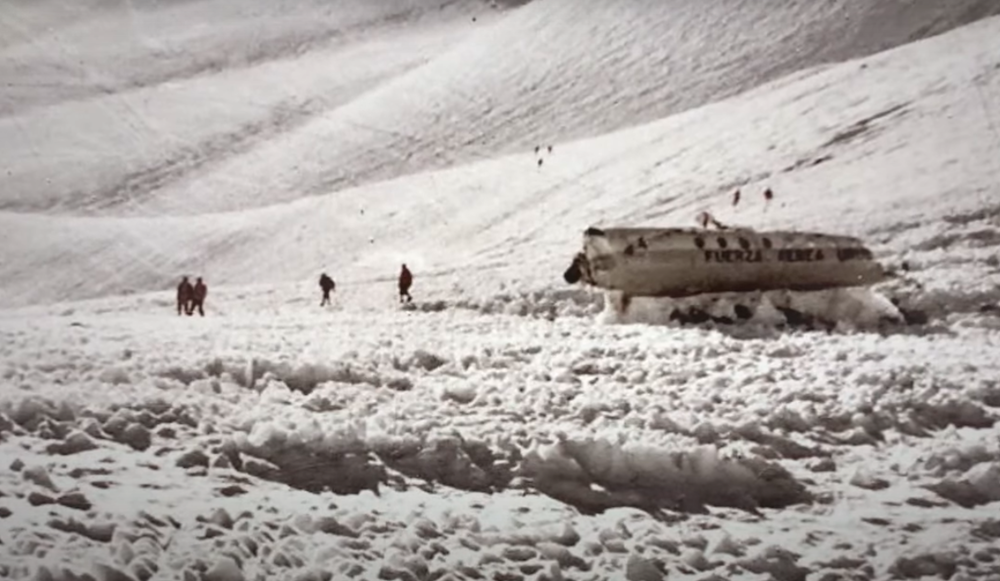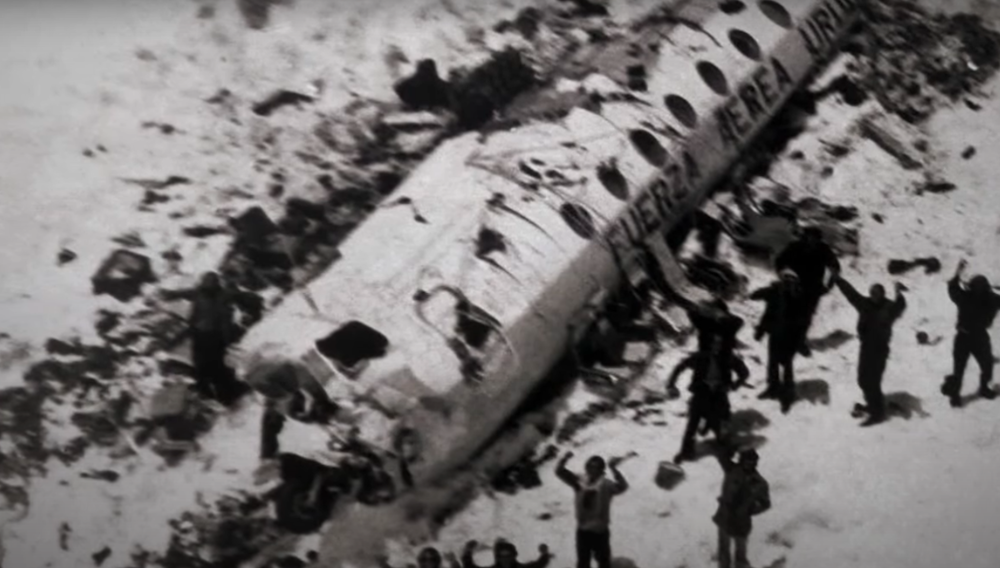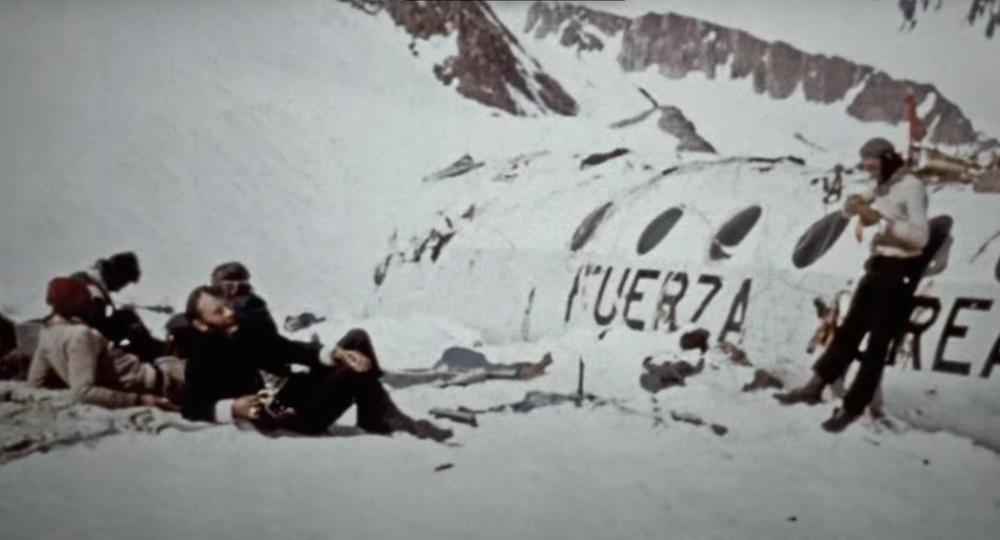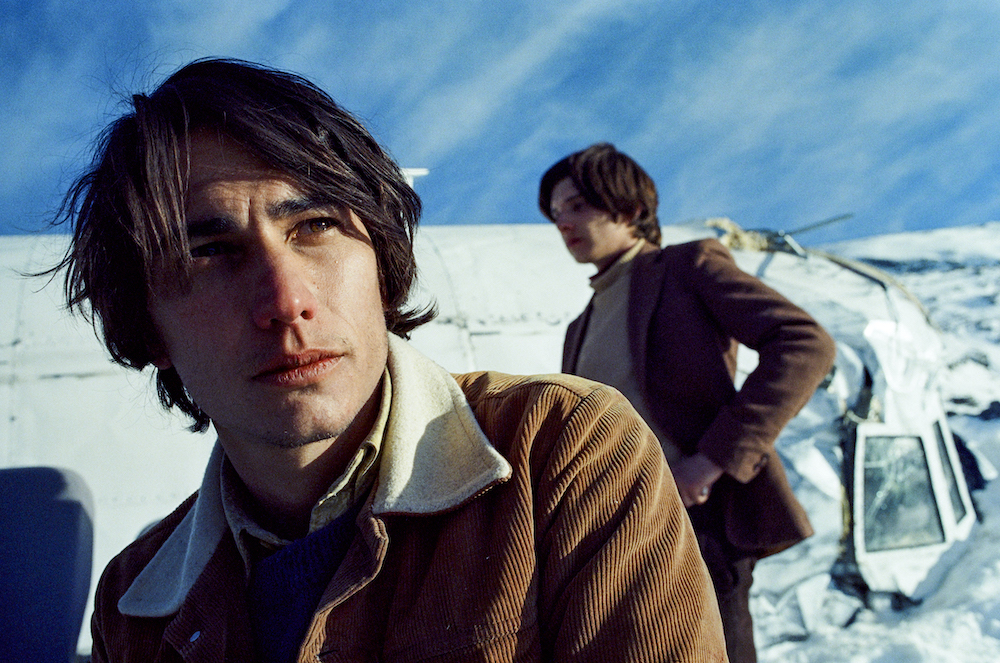In Netflix’s ‘Society of the Snow,’ we follow the incredible story of the people who are stranded in the desolation of the Andes after their plane crashes. Whatever hope of help they harbor is soon abandoned, and the passengers, the few that survived the crash, find themselves face to face with moral dilemmas that clash with their need for survival. Directed and co-written by J. A Bayona, the film takes the audience through many ups and downs, especially as the characters start to get more desperate. What makes things even more interesting is that the events in the film are based on reality.
Society of the Snow Focuses on the 1972 Crash of Flight 571

‘Society of the Snow’ recreates the events that happened in October 1972 when forty passengers and five crew members of Flight 571 met with a horrible plane crash. Most of the passengers on the plane belonged to the Old Christians amateur rugby group. The rest were their family members and friends. The team was flying from Montevideo, Uruguay, to Santiago, Chile, for a match. They left Uruguay on October 12, took a stop in Mendoza, Argentina, and then flew to Santiago on October 13.
The plane charted a path over the Andes and crashed over the Valley of Tears after the weather took a turn, and the obscurity of the path caused the plane to crash into the mountains, breaking it into half with both parts thrown on opposite sides of the mountain. Thirty-three passengers survived the crash, but a lot of them sustained severe injuries, and over the next seventy-two days, their numbers decreased rapidly, with only sixteen of them making it out by the end.
The Survivors Resorted to Cannibalism to Stay Alive
After the crash, when the passengers finally got their bearings, having helped the wounded, they hoped that the search operation had already begun for them and that they’d be found in no time. They salvaged a radio from the wreckage and listened to it with the hope of a breakthrough. While they saw and heard a couple of airplanes in the following days, help never arrived. Eight days later, they heard on the radio that the search operation had been suspended and would recommence later when the weather got better and the snow started to thaw.

Knowing now that they were on their own, the survivors came up with a plan to keep themselves alive for the unknown number of days to come. They rummaged through the wreckage to find and collect whatever they could. They made a system where everyone received an equal share of food and made shelter inside the wreckage to stay warm in the night. With little to no food at their disposal, concerns about hunger started to emerge. Whatever supplies they’d collected had already run out, and things only seemed to get worse for them with each day. On October 29, they were unexpectedly hit by an avalanche that buried them for three days, during which they continued to lose more people.
By now, it was clear that the only way they could keep themselves alive long enough to find a way to escape their situation was to eat the only thing available to them: the dead passengers. A debate ensued over whether or not they should do it, focusing on moral and religious concerns. Eventually, knowing how impossible it would be for them to survive, they started giving consent about their own bodies, allowing the others to eat them if they died first.
Impossible as the idea seemed, there was nothing else the passengers could do, especially when they knew there was no chance of them being found anytime soon. Daniel Fernández and his cousins Eduardo and Fito Strauch took the responsibility of cutting up pieces for others to eat without telling them which corpse they’d used. At first, some of the passengers refused to eat their friends and family members, but eventually, they had to come around. By the end, only the bones remained as the bodies were stripped of meat.
Rescue Never Came to Them, So Two Survivors Went to It

Having spent about two months stranded in the mountains, the survivors, whose numbers had dwindled to sixteen, decided to do something about their situation. On several occasions, they’d previously tried to hike in several directions, hoping to get to the civilization. However, the weather never allowed them to stray too far from the crash site. By December, the weather had cleared a bit, and it was as good time as any to take the final leap. This was now or never for them, and two of them— Nando Parrado and Roberto Canessa decided to go all the way, no matter what.
Their previous experiences had educated them about the dos and don’ts of the hike. They knew they’d need some kind of cover at night to protect them from the cold, so they fashioned a sleeping bag from the waterproof insulation they found on the plane. It took them ten days, crossing one mountain after another, to get to the point where the snow started to give way to vegetation. Eventually, they ended up near a village called Los Maitenes in Chile and were found by three herdsmen who were on the opposite side of the river.
Parrado used paper to write notes and threw it across the river to communicate their situation to the Chileans, who notified the authorities. Rescue finally arrived on December 22 in the form of two helicopters. Six survivors were rescued the same day, while the remaining eight were rescued the next day. The remains of the dead were left at the crash site along with the wreckage, where a rock pile sits as the memorial for the grave loss.
The Story of Flight 571 Survivors Took the Media by Storm
Sixteen people coming back home after having spent 72 days in the inhabitable Andes was a huge thing. No one had ever come back from a similar situation before, which made the public dub the whole thing a miracle. However, the perception soon turned against the survivors when it was discovered that they had resorted to cannibalism. Eventually, however, the reaction of the public softened as it became clear that the survivors had no other choice.

The story of the crash of Flight 571 and the survival against all odds of the sixteen passengers became a household story in Uruguay, its neighboring countries, and even Spain. Director J. A Bayona had heard about it when he was a child, but it was when he read the book by Pablo Vierci, who had personally known several survivors and victims of the crash, that he decided to make a film about it. What captivated him was not the act of survival itself but the moral and philosophical questions it posited. It was impossible to talk about life without focusing on death.
Before making the film, Bayona interviewed the survivors and had conversations with the families of those who perished in the Andes. All of them were kept in the loop throughout the making of the film. The actors, too, met the survivors and the families to know the people they were playing. They were put on strict diets to get them to lose weight over the course of the filming to make their transformation seem more organic.
When it came to shooting the film, Bayona wanted to keep things as realistic as possible and shoot it like a documentary. The film was shot on location in the Sierra Nevada in Granada, with the cast getting to know the cold and the desolation that their characters were supposed to experience. The crew took several shots of the Andes at the exact location of the crash in the Valley of Tears, which was then digitally added to the background in the film. Bayona was completely focused on making the film respectfully close to the true experience of the survivors while also capturing the point of view of the people, like Numa, who didn’t make it back.
Read More: Best Survival Movies on Netflix


You must be logged in to post a comment.